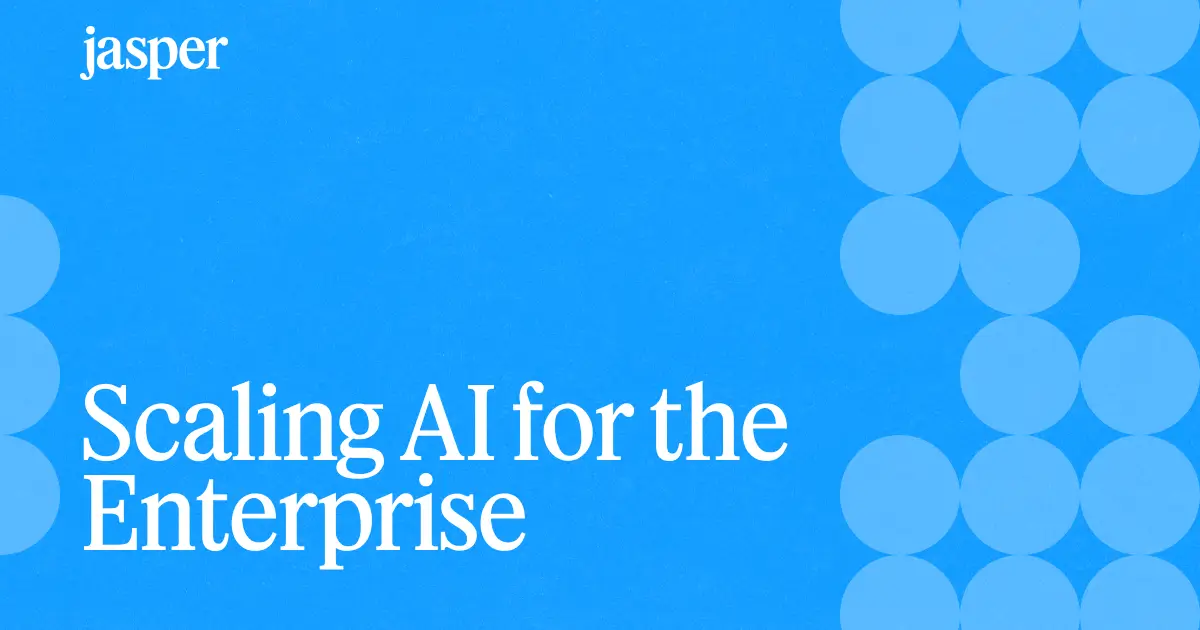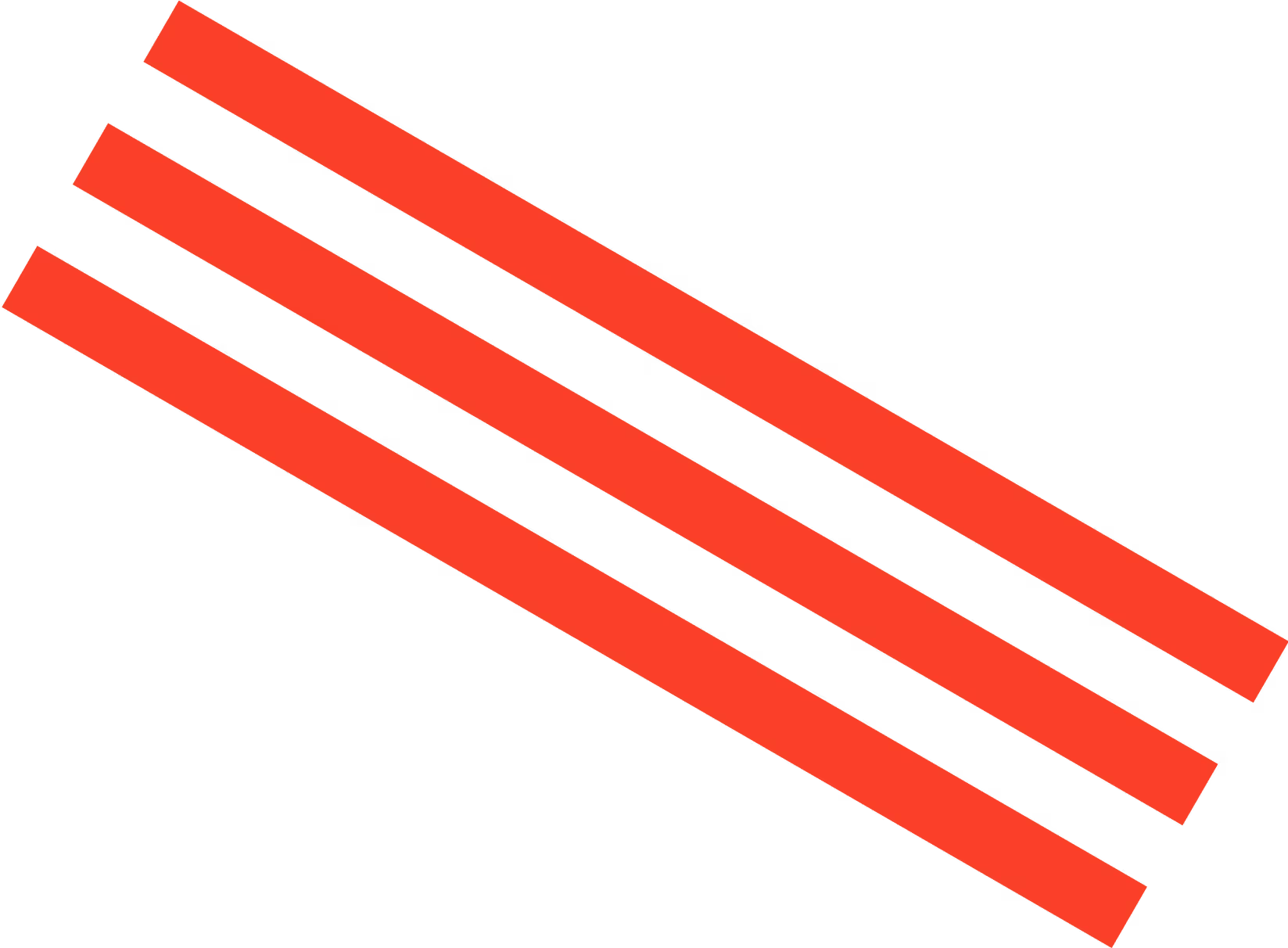A Beginner's Guide to Content Planning: Tips and Tools
An effective content plan can ensure consistency and quality in your content creation efforts. Here's what you need to know as you dive into content planning.

Creating a steady stream of impactful content can be one of the most challenging tasks for new content creators and marketers. Sometimes, it feels like you're on a hamster wheel. Most markers are in this boat: Data shows only 37% of B2B marketers have a documented content plan in place.

The good news: Effective content planning can streamline this process, ensuring consistency and quality in your content creation efforts. With a solid content strategy, all that's left to do is execute; no scrambling to develop topics and ideas. Here's what you need to know as you dive into content planning.
What is Content Planning?
Content planning involves developing a strategy for creating and distributing content that aligns with your goals. This process includes researching your target audience, choosing appropriate topics, establishing a content calendar, and utilizing tools to organize your efforts.

Forbes reported that businesses acknowledge the profitability of content marketing, and results show 89% of marketers report content marketing surpasses traditional marketing methods in generating a stronger return on investment. Moreover, data from HubSpot shows that 82% of marketers actively invest in content marketing. The stakes are high; these numbers emphasize the importance of having a documented content plan.
Content planning can be done in different increments (monthly, quarterly, or even annually), but is a dynamic process that should evolve as you go. By constantly adjusting your content plan to reflect new findings and evolving objectives, you can be sure you're delivering relevant and engaging material for your target audience.
"Marketers who want their content to stand out in 2024 will need to plan content briefs that go way above and beyond. This means conducting audience research to understand pain points and search intent, conducting original research to bring new ideas to online conversations, and interviewing experts for fresh insights," said Ashley R. Cummings, founder of Searchlight Content.
Why is Content Planning Important?
Content planning is important because it helps you thoughtfully create a plan of action around content creation rather than coming up with ideas on a whim, without any forethought or consideration for objectives. It tackles five key areas:
- Structure: Content planning provides a systematic way to manage content resources and timelines. Businesses are constantly pressured to create more content for different channels and platforms. As a result, content creation can quickly become daunting. With content planning, you’ll get a clear overview of what needs to be done to help you reach your goals.
- Consistency: Planning helps maintain a consistent content schedule for audience retention. The proliferation of content is making it hard for businesses to stand out. Without consistent (and high-quality) content, staying relevant is impossible. Today’s most successful businesses act like media hubs by regularly producing blog posts, ebooks, guides, podcasts, whitepapers, etc. However, content planning is a must for that level of content creation.
- Efficiency: A documented content plan streamlines production processes, making it easier to manage workloads and deadlines. The content plan is a central point that team members can refer to to see what’s coming next. Content creation involves different teams, so having visibility into the content plan can improve efficiency and break down silos.
- Engagement: Developing the plan requires considering your audience’s needs and interests before creating content. This allows you to create tailored content that resonates with your audience, increasing the likelihood of audience engagement.
- Tracking results: Establishes clear metrics for evaluating the performance of your content, such as engagement rates or conversion metrics. With a content plan, you can work strategically and monitor performance around those pieces, maximizing long-term efficacy. Moreover, you can make data-driven decisions for your content based on what’s working and what’s not.
In short, with a content plan, you can work strategically and monitor performance around those pieces, maximizing long-term efficacy.
"Spending 15-20 minutes planning your content for the week on Sunday makes hitting a consistent cadence a lot more likely," said Tommy Clark, CEO of Compound Social.
Key Steps in Creating a Content Plan
Ready to start building your content plan? Here's how to tackle each step of the process.
1. Define Your Goals and Objectives
Before creating any content, it's crucial to understand why you're doing it. Determine your goals, whether they're driving traffic, increasing engagement, or raising brand awareness. A good way to be sure you're setting SMART goals is to set specific, measurable, attainable, relevant, and time-bound.

What do SMART goals look like in practice? It could be goals like:
- Increase website traffic by 10% each month
- Increase social media followers by 50% within the next six months
- Grow your subscriber list by 1,000 within the next three months through gated content pieces.
2. Research Your Audience
Understanding your target audience is key, which is why it's a good idea to build out customer personas (so you know who you're writing for.) Ask questions like:
- What are their pain points?
- What kind of content do they consume?
- What channels do they spend the most time on?
- What questions do they have you can answer?
If you're not sure how to find answers to these questions, start by analyzing existing data. Use Google Analytics to gather data on your website visitors, including demographics, behavior, and interests. Next, analyze your social media platforms to understand audience engagement and demographics.
Content marketers often underestimate the importance of existing reviews and testimonials, which usually uncover common themes and sentiments about products or services. You can also review customer support tickets and inquiries to identify frequent issues or questions. Finally, your Customer Relationship Management (CRM) can be a real gold mine regarding content planning. Based on the insights into existing customers’ behaviors and characteristics, you can create buyer personas and later produce tailored content.
The existing data is just the tip of the iceberg. There are many ways to gather new data to help you understand your audience. Here are some of the ways to research your audience:
- Conduct surveys and polls: Tools like SurveyMonkey or Google Forms can help you design surveys with questions that reveal demographics, pain points, goals, and content preferences. You can also use social media polls to gather immediate feedback.
- Interview customers: Conduct one-on-one interviews with current customers to gain deeper insights into their needs, challenges, and preferences.
- Analyze competitors: Research the audience demographics of competitors to find similarities and differences compared to your audience.
3. Perform a Content Audit
A content audit helps understand what content has performed well in the past (and what hasn't.) Analyze your existing content to identify strengths, weaknesses, and gaps. Dive into your analytics to find out which pieces have the highest traffic, conversions, and social shares. From there, you can start building a content plan that leverages what's worked well in the past.
"The best brands take the time to assess their current content and its impact on the sales pipeline and buyer's journey. This evaluation helps identify opportunities to improve or repurpose existing content and reveals gaps that new content can address to guide prospects forward. The best content plans start with looking at where the brand is today with their content and evolving from it." -Ross Simmonds, Foundation, Inc.
Start by gathering your content in one place—think of it as a content inventory. For this part of the content audit, you can use Google Sheets, but any spreadsheet will do.
From there, dive into each piece, checking if it’s still relevant, accurate, and performing well. Does it align with your current goals, or is it time for a refresh? Flag anything outdated or underperforming and decide whether to update, repurpose, or retire it.
During the content audit, look for gaps where your content might be lacking and spot opportunities to create something new. Use what you find to tweak your strategy, ensuring that every piece of content works hard to support your goals and resonates with your audience.
Additionally, during your content audit, you can use various tools that can help streamline the process, provide insights, and enhance efficiency, including:
- Google Analytics: For analyzing content performance metrics like page views, bounce rates, and user behavior.
- SEMrush: To assess SEO performance, keyword rankings, and identify content gaps.
- Ahrefs: For backlink analysis, content performance tracking, and keyword research.
- Screaming Frog SEO Spider: To crawl your website and create a comprehensive inventory of your content, including meta tags and URL structure.
4. Brainstorm Content Ideas
Now, it's time to brainstorm. AI tools can help speed up the ideation process and get the ideas rolling. Jasper has over 50 different templates you can use, one of which is the Blog Post Topic Ideas template. Using this template, you can easily generate blog ideas by adding inputs such as company name, product description, audience, brand voice, and examples.

,
Another approach to generating ideas is the Idea Farm by Animalz. With this approach, you treat your ideas like seeds. You plant and nurture them; when the timing is right, you harvest ripe ideas. Whether that’s a Google Doc, Notion database, or a spreadsheet tab, storing and nurturing your ideas with time will help you develop an always-on mindset and generate ideas more easily.
5. Create a Content Calendar
A content calendar will help you plan the publishing and distribution of your content. To start, begin with a four-week content plan. If you find that you're able to plan out further than that, you can build a content calendar for longer stretches of time, like quarterly or bi-annually. Just remember to revise and adjust along the way as audience needs and preferences change.

As far as the how of your content calendar, it can be as simple as a Google Doc or more formalized with tools like Trello or Asana. A well-structured content calendar should include several key elements to ensure it effectively manages and organizes your content strategy. Here’s what you should incorporate:
- Content title
- Content type
- Owner
- Publication date
- Deadlines
- Distribution channels
- Keywords and SEO
- Link to the published piece
Set a consistent posting schedule and incorporate a mix of content types to engage different audience segments. Regularly review your content calendar and adjust based on performance insights. Build some flexibility into your calendar to adapt to new opportunities and changes.
6. Assign Responsibilities
You'll want to start delegating once the content calendar is in place. Clearly define roles within your team: Who will write, edit, and publish content? Establish an efficient workflow to keep things on track, assign deadlines, and bring your team together regularly to discuss performance.
Using project management tools such as Monday allows you to assign content pieces to different people, follow up on progress, check status, and streamline the content creation process.

The content planning process is complex because it includes many steps: content creation, editing and proofreading, approval, SEO optimization, design and visuals, scheduling and publishing, promotion, performance tracking, and content updates.
When you clearly define and assign these responsibilities, you keep everything running smoothly, ensuring each part of your content planning and execution is handled efficiently. This way, you’ll have a more organized approach and a content strategy that really hits the mark.
Tools and Resources for Effective Content Planning
Planning great content can feel overwhelming, but having the right tools and resources can make all the difference. In this section, we’ll dive into some of the best options to help you get organized, stay on track, and make your content planning a breeze.
Jasper
Jasper's AI can help with your content brainstorming efforts, as well as with headline generation and even generation of first drafts. If you're working to scale up content quickly, AI tools like this can help you quickly iterate while cutting down on the time and financial resources required to produce high volumes of content.

Jasper offers several features that make it a valuable tool for content planning:
- Generating ideas: Jasper AI can help you generate ideas based on your input, giving you new and relevant topics for your audience. Moreover, using Jasper AI, you can go from idea to execution faster.
- Templates and frameworks: With Jasper AI, you don’t need to start from scratch. There are plenty of templates for different purposes you can use to get your creative juices flowing.
- Tone and style adjustments: Jasper AI allows you to tailor the tone and style of your content to match your brand voice or target audience, making your content more effective and engaging.
- Collaboration features: Whether you’re part of a content team or the only content marketer in the company, you'll need to collaborate with other team members. Jasper AI supports team collaboration, allowing multiple users to collaborate on content projects, share feedback, and make revisions seamlessly.
Trello
Trello is a flexible project management tool that can be used to create content calendars and assign tasks, while saving you many back-and-forth emails along the way. Because you can collaborate within your Trello board, you and your team can resolve issues fast and stay on-track with deadlines.

Some of the features that make Trello useful for content planning include:
- Customizable boards and lists: You can organize your content planning with customizable boards, lists, and cards to track tasks, deadlines, and ideas in a visual format.
- Deadline and reminder features: Using Trello, you can set due dates, create checklists, and establish reminders to keep your content production on schedule and ensure timely delivery.
- Collaboration and integration: To streamline the content planning process, you can collaborate with your team in real-time, share files, and integrate with other tools like Slack and Google Drive.
Google Analytics
Google Analytics is a great tool for diving into the data around your content during the planning phases. It provides insights into audience behavior, top-performing links, and other metrics that can help you tailor content more effectively.

Data is crucial in content planning as it helps you make informed decisions. Here’s what makes Google Analytics an important part of the content planning tech stack:
- Audience insights: Using Google Analytics, you can gain valuable insights into your audience’s demographics, interests, and behavior, helping you tailor your content to better meet their needs and preferences.
- Content performance metrics: Insights into key metrics such as page views, bounce rates, and time on page are vital to evaluating the effectiveness of your content and identifying areas for improvement.
Traffic sources analysis: Distribution is a big part of content planning. If you want your content to perform well, you must understand where your traffic is coming from—whether it's organic search, social media, or referral sites. This way, you can refine your content strategy and optimize your promotional efforts.
Ahrefs
Ahrefs is an SEO tool for keyword research, which can help to identify high-demand topics while content planning. Along with search volumes for specific keywords and phrases, you can get estimations on traffic potential and see how difficult it may be to rank for different terms.

Ahrefs can improve your content planning with the following features:
- Keyword research and analysis: Using Ahrefs, you can discover high-traffic keywords and content gaps to guide your content creation strategy and effectively target relevant search terms.
- Competitor insights: Knowing the content your competitors are putting out and analyzing their strategies can help you uncover opportunities for your own content planning.
- Content performance tracking: With Ahrefs, you can monitor the performance of your content with detailed metrics on organic traffic, keyword rankings, and engagement to refine and optimize your content strategy.
Canva
Canva is a great resource and user-friendly design tool for creating eye-catching visuals to complement your content. You can also use templates there to help with content graphics or upgrade to the Pro tier for advanced content planning and scheduling within the platform.

Here are the features that make Canva a suitable tool for content planning:
- Design templates: With Canva, you can access a wide range of customizable templates for social media posts, blog graphics, and marketing materials, which will ease your content planning process.
- Branding tools: Using brand kits allows you to maintain consistency with your logo, color schemes, and fonts across all your content, ensuring a cohesive visual identity.
- Collaborative Features: Canva lets you collaborate with team members in real-time, share design drafts, and gather feedback directly within the platform to enhance your content planning and execution.
Tips for Maintaining Consistency and Flexibility Whe Content Planning
With the nuts and bolts of your content plan in place, all that's left to do is to start publishing. As part of this work, be sure to monitor performance along the way. A few things to assist in this work:
- Batch Create Content: Reserve a few days each month to focus solely on content creation. This can help maintain a steady flow of content. Planning is one piece, but execution is the follow-through.
- Set Realistic Goals: Don’t overcommit. It's better to produce consistent, high-quality content rather than sporadic posts of mediocrity. Less is more when you're just getting started, and you can scale up from there.
- Be Adaptable: Stay flexible and adjust your content strategy based on performance metrics and industry trends. Keep a close eye on performance metrics so you're working toward publishing your best, most effective content year-round.
- Develop an always-on mindset: Content planning is not a one-and-done process. You have to be open-minded and always on the lookout for new ideas. Having a constant flow of topics will enable you to maintain consistency.
- Use AI to your advantage: Imagine having a smart assistant that sifts through tons of data to spot trends and determine what your audience craves. Sounds great, right? Using tools like Jasper AI will help you develop fresh topic ideas, suggest optimizations based on past performance, and handle repetitive stuff, giving you more time to focus on the creative side.
- Build a content repository: Having a content repository can make your life easier when planning and staying consistent. It’s like having a well-organized digital filing cabinet where you keep all your past content, ideas, and resources in one place. This setup makes it super simple to see what’s already been done, spot gaps, and quickly adjust your strategy if trends or audience interests shift.
- Implement regular content audits: Your content plan is not set in stone. Make sure to keep regular check-ins Make sure to keep regular check-ins to ensure that the content plan is taking you in the right direction. your to ensure that the content plan takes you in the right direction. These pulse checks will allow you to spot gaps and give you enough time to adjust the course.
- Monitor performance and optimize: Regularly checking engagement and click rates gives you a clear picture of what your audience loves and is skipping. This means you can easily adjust your strategy by jumping on new trends or changing your approach to better connect with your audience.
Put Your Content Plan in Action
Content planning is the cornerstone of effective content marketing. You can create a structured approach that maintains consistency and quality by defining clear goals, understanding your audience, and utilizing the right tools. Remember, flexibility is key. Regularly review and adjust your plan based on performance metrics to keep up with changing trends and audience preferences.
More of the latest & greatest

Scaling AI for the Enterprise: How Marketing Leaders Drive Impact
High-performing marketing teams are scaling AI with structure and strategy. Learn how CMOs can lead the way to drive organization-wide impact.
July 1, 2025
|
Megan Dubin

Reflections from Cannes: Why Brand and People Still Matter Most in the Era of AI
At Cannes Lions 2025, one truth stood out: brand, trust, and authenticity are making a powerful comeback.
June 24, 2025
|
Loreal Lynch

Interactive Tool: Benchmark Your AI in Marketing Strategy
Discover your marketing team's AI maturity. Benchmark your strategy, compare with peers, and uncover gaps with an interactive tool.
June 17, 2025
|
Megan Dubin







